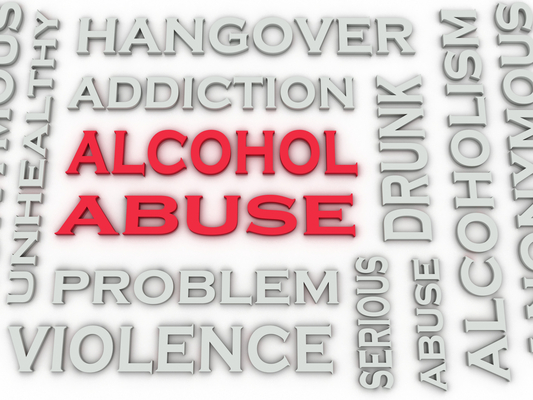Share the post "Life Insurance and Alcohol Underwriting Tips"
The Risk of Life Insurance and Alcohol
It’s common to indulge in a glass of wine with dinner or at the end of the long day. According to a 2004 Gallup poll, about 63% of Americans reported drinking alcoholic beverages. And that was in 2004. A more recent 2014 Washington Post article reported that roughly 24 million Americans consume an average of 10 drinks per day – that’s 74 drinks a week! If this is alarming, you’re not alone. These findings correspond with something called The Pareto Law, which postulates that the upper twenty percent of consumers comprise about 80% of the product’s sales.
The problem is that 10 or more drinks per day falls into the category of a drinking problem; the consequences of which are far more severe than monetary. Think: seizures, stroke, liver failure and even hallucinations – all high-risk diseases that negatively impact your health and increase your risk of dying.
If you or someone you know are experiencing a problem with alcohol abuse, please visit the National Institute on Alcohol Abuse and Alcoholism’s website for medical, intervention and treatment resources, as well as psychological resources in the form of counselors and support groups. Additionally, a drinking problem can impact your life insurance premiums and how underwriters view your risk.
Let’s take a look at some of the ways that companies will view the risk of life insurance and alcohol.
Life Insurance and Alcohol: The Basics
Before we go into in-depth detail about the basics of life insurance underwriting for those who are abusing alcohol, let’s talk about what constitutes “alcohol abuse.” One of the biggest problems in underwriting is defining alcohol abuse because there is no designated amount of alcohol that is considered an acceptable, or even excessive, amount although there are guidelines.
The National Institute on Alcohol Abuse and Alcoholism (NIAAA) defines moderate drinking as consuming up to two drinks a day for men and one-per-day for women. NIAAA also defines “binge drinking,” a pattern of consuming alcohol that increases blood alcohol levels, as consuming upwards of 5 alcoholic drinks in a set period (about 2 hours). The Institute also defines risk for developing Alcohol Use Disorder.
What the NIAA does not define; however, is “acceptability” of alcohol consumption, which plays a significant role in how society – and insurers – view and underwrite alcoholism. While 1-2 drinks per day might be considered moderate by NIAAA’s standard, it could seem excessive to some who don’t consume.
The definition of “excessive” also exists on a spectrum; for example, binge drinkers may drink more than the average individual but are not physiologically or psychologically addicted to the substance. Additionally, many factors influence a person’s reaction to alcohol. These factors include height, age, weight and biochemical makeup.
If you don’t know much about life insurance, there is one important thing to keep in mind: risk is relative. This makes life insurance and alcohol tough to underwrite, as underwriters, insurers and applicants all pose different risks and view these risks through varying lenses.
Alcohol and High Risk Insurance
The biggest concern underwriters will have when assessing your risk and alcohol consumption is your risk of being involved in an accident.
It is the job of a company’s underwriter to accept as much risk as the business can handle while allowing the insurer to remain profitable. Essentially, an underwriter is an actuary, analyzing the financial consequences of an applicant’s risk.
If you are high risk you won’t necessarily be declined for coverage. To mitigate some of the gamble of taking on a high-risk client (one whose likelihood of death is greater than the average person’s), insurers came up with a classification system for applications.
These classifications are broken into four categories: Preferred, Standard, Substandard and Declined. The greater your risk, the lower your risk class and the higher your premiums. So, if you are looking for DUI life insurance or life insurance after any accidents involving alcohol use, you are considered a liability to insurers and can reasonably expect to pay more for your life insurance premiums.
As we mentioned before, there is no set amount of alcohol consumption that marks you as a higher risk than other applicants, but the amount of alcohol you consume is important when underwriting you for coverage. Binge drinkers are more likely than casual or social drinkers to be involved in accidents that put them at risk.
Apart from asking how much alcohol you consume on a daily basis, underwriters will look at the following factors:
- If you currently drink alcohol, how much and how frequently you imbibe.
- If you do not consume alcohol, when was the last time you drank?
- Your history of alcohol use, and if you have ever sought treatment for your alcohol use.
- Have you ever had a DUI/DWI? If so, your underwriter will need details. DUI life insurance definitely falls under the category of high risk life insurance, so the more detail you can provide, the better!
- Your current relationship with alcohol and if you are involved in treatment programs, such as AA.
Underwriters are particularly interested in the latter bits of information when an applicant is applying for life insurance as an alcoholic.
Life Insurance For Recovering Alcoholics
One secret of the life insurance industry is that once you are labeled high risk doesn’t mean you will always be labeled as high risk. There are several measures you can take to improve your health and lessen your risk, especially if you are applying for life insurance as an alcoholic.
If you were involved in treatment for alcohol abuse five years or more before your application, you might be eligible for preferred or standard risk classifications. If you are still attending AA or seeing a sober sponsor, your chance of earning lower premiums is even better.
If this applies to your unique situation, you will need to provide a cover letter written by your life insurance agent or yourself. In this letter, be sure to include your history with alcohol use, the details of your rehabilitation program and proof that your work and family history are stable. Additionally, you should be sure to provide proof of a clean driving record and your most recent medical records. If you’ve had a past alcohol related accident and are applying for life insurance with a DUI, your cover letter is integral.
Medical records are important to any high risk life insurance application, and are especially important when applying for life insurance with a history of alcohol abuse.
Your medical records should reflect the following details of your alcohol use. Have you experienced:
– Blackouts?
– Delirium Tremens?
– Convulsions?
– Liver problems?
– Kidney disease?
– Depression?
Your underwriter will also want to know the timeline of these diseases in relation to your alcohol use and the treatment options you sought for the diseases. If you’ve had a history of emotional disorders, high blood pressure, traces of blood in your urine or a diagnosis of Hepatitis A, B or C, your underwriter will also want to know this information.
Alcohol use and a history of alcohol abuse are not reasons to avoid life insurance or to fear that you will be faced with declines.
We want to stress that there is an insurance policy for everyone’s situation, and it may take time to find the policy that is right for you. There are several options available to you, including guaranteed issue life insurance and life insurance with a flat extra tacked on to the premium. These options may be more expensive but serve just as well until you find the perfect carrier for you.
The key to finding these options is to find a good independent life insurance agent, who will work for you, not the carriers. Call me today to see how I can help you to find the best policy for life insurance and alcohol.




